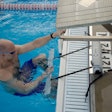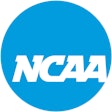Although used by a relatively small number of athletes in select sports, the health risks posed by anabolic steroids have prompted intensified efforts to halt their use
Nearly everyone agrees that anabolic steroid use by athletes is a problem, though not everyone agrees on the seriousness of the dilemma.
Log in to view the full article
Although used by a relatively small number of athletes in select sports, the health risks posed by anabolic steroids have prompted intensified efforts to halt their use
Nearly everyone agrees that anabolic steroid use by athletes is a problem, though not everyone agrees on the seriousness of the dilemma.
It’s commonly accepted that steroids are effective in building muscle mass, making them attractive to athletes in strength sports like weight-lifting and football. At the same time, there seems little doubt now that steroid use can create serious health problems—liver cancer, heart disease and sterility, among others.
Besides, if steroids do help improve performance, those who use the drugs—legally or illegally—can gain an unfair competitive advantage over those who don’t. Steroid use has been banned by the NCAA, the International Olympic Committee, the U.S. Olympic Committee and most other amateur sports organizations.
(Use of steroids is not illegal if prescribed by a physician, though most athletes apparently obtain their steroids through the black market, often through local gyms and health clubs.)
In any case, the use of steroids by athletes has prompted a response in a number of quarters:
The federal government obviously believes the problem is serious enough to warrant a major law enforcement offensive. On May 22, 1986, the U.S. Department of Justice, the FBI and the Food and Drug Administration announced a joint crackdown on “the black-market manufacture and distribution of anabolic steroids and other drugs used to enhance athletic performance.”
Three people were indicted on charges of dispensing prescription drugs without a prescription, following a one-year investigation during which approximately $2 million worth of steroids were seized by federal investigators.
Almost one year to the day later, on May 21, an FDA/Justice Department/FBI/Customs Service investigation culminated in a 110-count indictment of 34 people charged with manufacturing, smuggling and distributing black-market steroids. Among those indicted were University of Miami associate strength coach Pat Jacobs and British Olympic medalist David Jenkins.
The black market in anabolic steroids is estimated to be worth at least $100 million a year, according to the FDA, which says the danger of using steroids has been increased by the development of counterfeit steroids. In at least one case, says the FDA, confiscated counterfeit drugs were found to be contaminated, with the potential to cause infection.
The National Football League, where steroid use is widely believed to be rampant among interior linemen, is now concerned enough that, for the first time, it tested for steroid use during training camp in July and August.
The NFL’s testing was believed to be primarily exploratory, “to see how bad the problem is,” according to one observer. It was considered unlikely any sanctions would be imposed on players who tested positive, since “that’s an issue in the collective bargaining agreement (which was due to expire on Aug. 31),” according to an NFL spokesperson, who said the league considered steroid use “a health issue.”
The NFL also tested prospective draftees for steroids and other drugs during its tryout camp in January. Of the 330 college football players involved, 29 tested positive, including 20 for steroids.
The NCAA began testing for steroids and other drugs last fall during championship events and postseason football bowl games. Only 1.7 percent of the 2,023 athletes tested were declared ineligible because of positive test results, although several of those created headlines when they were banned from major bowl games.
Now the NCAA Executive Committee says it is considering a proposal to begin in-season testing of athletes, at least in part to catch those who might try to time their steroid-use “cycles” so that all traces of the drugs will be gone from their system by the time postseason testing begins.
The soonest that proposal could be considered by the NCAA membership, however, would be the January 1988 convention, and Frank Uryasz, the NCAA assistant director for research and sports sciences, says that appears unlikely.
NCAA member institutions also seem concerned. Seventy percent of Division I schools and 30 percent of all member schools have begun testing for steroids and/or other drugs, or are actively planning to do so, according to the NCAA.
Much Ado About What?
All this attention to steroids would seem to signal a widespread problem, but the numbers indicate otherwise. In college sports, estimates are that only 3 to 7 percent of athletes use anabolic steroids, though the numbers are undoubtedly higher in football, especially among interior lineman and linebackers.
Robert Murphy, M.D., team physician for Ohio State University and former chair of the NCAA Drug Education Committee, says he considers drugs like alcohol, marijuana and cocaine to be a more serious problem.
“If there are unlimited funds, I have no problem with (widespread testing for steroid use) because I want to stop anabolic steroids in the worst way. They’re terrible drugs,” says Murphy. “I think every school ought to do sporadic testing of the most susceptible athletes, but we have to put our emphasis on getting a handle on alcohol, marijuana and cocaine.
“I don’t want this to come out that Dr. Murhpy’s opposed to anabolic steroid testing. I just think the money is best spent on the things causing the real problems, keeping them from classes, keeping them from performing their best on the field, putting them in situations where they might be tempted to throw the game or get involved in point shaving.”
One of the most common arguments against Murphy’s stance is that the NCAA and its member institutions ought not be involved in enforcing legal restrictions against recreational drugs like cocaine and marijuana, but should instead limit their efforts to controlling performance-enhancing drugs like anabolic steroids. Assuring fairness of competition, so the argument goes, is the only valid role for the NCAA in drug-related matters. Lefty Driesell and Gary McLain notwithstanding, there is little evidence that cocaine or other recreational drugs enhance performance.
Ron Heitzinger, a drug-abuse consultant who works with several major universities and professional teams, thinks the NCAA and its members have every right—and a responsibility—to deal with the potentially harmful effects of recreational drugs on the health of their athletes.
At the same time, however, he believes steroids, though they are used by a relatively small number of athletes, pose a serious threat to sports and their participants.
“Without a doubt, steroids will be a topic of major concern, a focal point for almost all institutions,” says Heitzinger.
“Four percent is not a big figure,” he says, referring to a 1985 NCAA survey that projected 4 percent use of steroids among college athletes. However, use appears to be growing (and athletes using steroids at younger ages) and the long-term health effects can be fatal, though it’s difficult to persuade athletes to defer what they see as an immediate benefit in order to protect long-term health.
“Athletes tend not to look to the future; they only live for now,” says Heitzinger, a former basketball player who has been counseling athletes on drug use since 1981.
“It’s a relatively small, select group who tend to be users and it’s very hard to convince them (not to use steroids), because they see obvious effects. If you have a kid, 6’3”, 245, solid muscle, and you tell him there’s something wrong, he’s going to laugh at you.”
Besides, athletes begin to think they have to have the steroids to be able to compete, says Heitzinger. “You can talk kids out of street drugs, but with steroids, it becomes a life-consuming thing.”
Lines of Defense
The NCAA’s postseason testing is widely considered to be a valuable first step in combating anabolic steroid use, but is unlikely to come close to ending the practice.
For one thing, the water-based steroids that are now community used remain in the athlete’s system for only 20 to 40 days, whereas the older oil-based drugs are detectable for several months. Athletes who know how to use steroids and who know when testing is likely to occur can time the cycle of use/non-use to clear their system by testing time.
Speaking of the 29 draft prospects who tested positive at the NFL tryout camp, one NFL team’s general manager was quoted in a Dallas newspaper as saying that “players who get caught are either very stupid or so heavily into it they can’t get off.”
“The only real solution is random, unannounced testing throughout the year,” says George White of the University of Utah School of Medicine, who works with the Utes’ drug counseling program. “There are just too many athletes who think they can beat the system.”
Aside from that, says Heitzinger, the real solution lies in the hands of the institutions and their conferences.
Conferences need to have minimum standards for all their schools, he says, “because otherwise you have coaches at one school saying, ‘They’ve got guys 6’8”, 300 pounds.’ So then you have coaches saying to their players, ‘We don’t want you to use steroids, but we want to be 6’8”, 300 pounds.’ That’s a double message.”
Ohio State’s Murphy agrees that “there are institutions who say, ‘The guys across the line are on steroids, so we have to be too to stay competitive.’ That’s true of coaches, physicians and everyone else.”
Physicians and strength coaches are especially critical links in the chain of control, says Heitzinger.
Physicians who don’t yet understand the long-term health risks posed by steroid use have been known to prescribe steroids for their athlete patients under the belief that “safe” prescribed use of steroids will benefit them as athletes. More education of physicians on the realities of steroids is needed, says Heitzinger.
“The strength coach, though, is really crucial, because he’s often the first point of contact, the one the athlete is going to go to to talk about steroids,” says Heitzinger. “The athlete will see that the coach has a good frame himself, and he’s going to want to know if that frame was built with weights or with a combination of weights and steroids.
“You have to have a committed strength coach who has a strong philosophy on non-use of steroids.”
Athletic departments also need a policy stating that athletic personnel who distribute steroids or actively encourage steroid use will be subject to sanctions.
Keith Kephart, strength coach at the University of South Carolina and past president of the National Strength and Conditioning Association, agrees that strength coaches can be strong role models for the athletes they direct and says the NSCA has developed a policy statement directing its members—many of whom are collegiate strength coaches—“to do everything we can discourage the use of steroids.”
The NSCA’s position is a response, at least in part, to the publicity surrounding former Vanderbilt University strength coach E.J. Kreis, who was accused of distributing steroids to athletes. (Kreis now devotes part of his time speaking to athletes about the risks of steroid use.)
“It did kind of give us a black eye,” admits Kephart.
Even those who oppose steroid use can find themselves in the uncomfortable position of having to counsel athletes who have already decided to use steroids and who are looking for advice on how to do so.
Some decide that “if the athlete is going to do it, he might as well do it safely,” says Heitzinger. “Athletes ask us about steroids, and we give them correct answers, but our role is to try to direct them away from that usage.”
“It really can be a Catch-22,” says Kephart. “The kids are getting advice on the streets that isn’t even close to being good.
“Our position is, we’re going to do everything we can to educate our kids and provide them with alternative, such as supplements, amino acids and carbohydrates. “we tell them, ‘Give your body a chance to respond normally to optimum training conditions.’
“We try to get the parents involved and the doctor involved and, if necessary, the athletic director or the head coach.”
Increasing Sophistication
Heitzinger believes the steps that have been taken so far are encouraging, but that the use pattern of steroids and other performance-enhancing drugs makes it a difficult problem to tackle.
First of all, steroids, which have been in use since the 1950s, didn’t attract much attention until the success of the East German women in the 1976 Olympics highlighted the drugs’ performance-enhancing capabilities. Steroids didn’t become a topic of widespread concern until the embarrassment of the 1983 Pan American Games, when 15 athletes, including some Americans, were disqualified because they tested positive for steroids or other banned substances.
That means the push to stop use of the drugs is less than five years old, and, says Heitzinger, “anytime you advertise drug use by talking about it, you get increased usage at first.”
Drug testing will gradually reduce the number of users, especially the fence sitters and experimental users. However, testing for steroids is expensive compared to testing for recreational drugs—testing one individual for steroids can cost up to $200 if accurate testing procedures are used—so smaller schools would be unlikely to be able to afford widespread testing.
“A steroid testing program for them would be the total budget for one sport, so they need to emphasize education and maybe test only for suspected use,” says Heitzinger.
Even with sophisticated testing, steroid use may be difficult to detect as athletes become more sophisiticated in their use patterns. (“They always seem to stay a step ahead,” says Heitzinger.)
What’s worse, many observers believe there is increased use of human growth hormone (HGH), a substance that is currently undetectable by tests. In the past HGH use was kept relatively low because it was so expensive, the only source being the pituitary glands of human cadavers. Now, the recombinant DNA research being able to generate HGH synthetically, the price is beginning to drop.
It seems unlikely that the use of strength-inducing drugs will be eliminated, though there is hope that continued education about the health risks—especially from the former users who have experienced health problems—will at least deter their use.
Researchers also hope to develop proof that athletes can accomplish the same strength gains naturally and safely through nutritional supplements like amino acids.
Kephart says that’s the approach many strength coaches are taking, but that it’s hard to overcome young athletes’ impatience for results.
“The problem is they’re caught up in the whole social idea of, ‘we want it now,’ just like the older person who wants a diet pill to lose pounds quickly,” says Kephart.
“They say, ‘I don’t want to take the time.’ It’s really part of our social dilemma.”




































